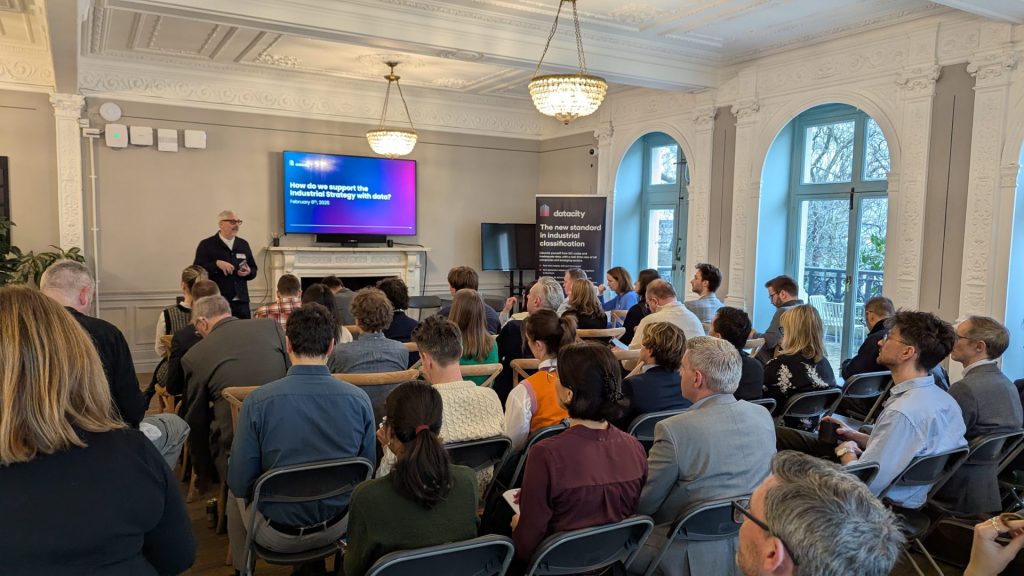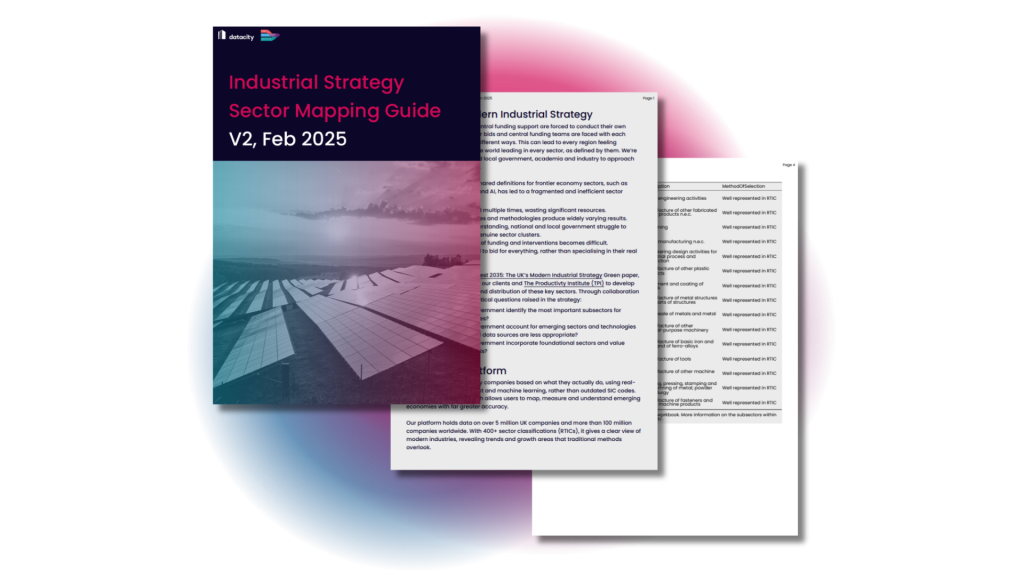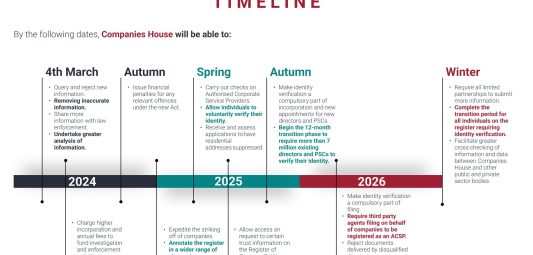On the 7th of February 2025, we hosted an invite-only summit at PUBLIC Hall to explore a crucial question: How can data support the UK government’s Industrial Strategy and help define the 8 high-potential growth sectors outlined in the Invest 2035 green paper?
In this blog, our CEO Alex Craven discusses what we learned at the summit, the challenges facing policymakers and industry leaders, and how The Data City can help build a national consensus on these key growth sectors.

The Data City already works with over 100 active users across key UK ministries, including HM Treasury, DSIT, DBT, and DLUHC, as well as hundreds more in local government, NGOs, think tanks, and industry.
One challenge they all share? The limitations of outdated SIC codes in accurately defining and supporting the emerging sectors critical to our economic future.
Even the Invest 2035 green paper highlights this issue and calls for ideas on how to address it:
- How should the UK government identify the most important subsectors for delivering our objectives?
- How should the UK government account for emerging sectors and technologies for which conventional data sources are less appropriate?
- How should the UK government incorporate foundational sectors and value chains into this analysis?
At our summit, we were privileged to hear from experts, including Paul Swinney (Centre for Cities), Raquel Ortega (The Productivity Institute), and our own Tom Forth.
A lively panel discussion followed, featuring representatives from techUK, CBI, The Productivity Institute, The Data City, and Centre for Cities.
Our key takeaways
In the final session, I asked our audience: “How do we achieve a national consensus on the definition of the 8 High Potential Sectors, their subsectors, and the country’s high-potential clusters?”
Here’s what we heard:
- No one is driving a national consensus. While individual teams are working in isolation on their own datasets, no one is publishing an open, shared framework.
- Uncertainty about the ONS’s role. There was debate over whether the ONS could or should lead this effort. The consensus was that it’s unlikely they will (though we’d welcome input from ONS directly).
- A call for The Data City to lead. In the absence of a national framework, attendees agreed that The Data City is well-placed to step in and fulfil this role.
What’s Next?
There were plenty of other asks from our audience, such as mapping innovation, understanding sector skills requirements, and tracking the demand and supply dynamics of our labour force to support these 8 high-potential sectors. We’ll be adding these to our roadmap and extending our work with partners like Lightcast.
The key takeaway, however, was the strong support for our work mapping the 8 sectors. We’ve just published Version 2, incorporating the valuable feedback we’ve received so far. We’re now working towards Version 3, which we hope will finalise the framework.

We’ve already had hundreds of downloads, and the feedback has been incredibly useful. Our goal is to make this as representative as possible and build a genuine consensus. Once the framework is complete, we’ll start publishing insights on these sectors and tracking their performance.
A huge thank you to everyone who joined us at the London Summit and helped shape this important conversation. If you’re as excited as we are about redefining the UK’s high-potential sectors, we’d love to hear from you. Whether it’s feedback on our guide or a project you’re working on, get in touch and let’s collaborate.


